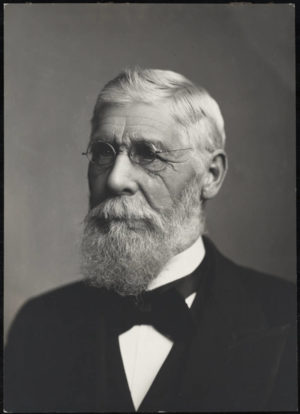By Hal Walter
Coaching a high-school athlete on the autism spectrum to run track and cross-country is not for the faint of heart, and sometimes it seems there should be a soundtrack playing in the background complete with foreboding drumrolls and exuberant crescendos.
Any meet could result in a total meltdown or an epic moment of triumph. The only way to find out is to keep showing up. The challenge becomes even more personal and consuming when that athlete is your own son.
Wherever we travel for meets in the Central Colorado area we’re often greeted with odd looks as I anoint Harrison with special essential oil formulas from Endurance Alchemy Lab in Crestone. We’re also often asked, “What’s up with the headphones?”
I call Harrison “The Blur,” because he runs in a fuzzy lane dividing his reality and everyone else’s, and because he’s pretty fast. He also has a deep connection with music, singing in the school choir and studying piano and guitar.
He ran on Custer County’s middle school cross country team, and joined the high school varsity teams this past school year. I helped out as a volunteer until a series of departures led to me being hired as the school’s distance running coach.
Early on it seemed like external noises – particularly people cheering –were causing issues. It was easy for me to buy into the stereotype of autistic people having sensory issues, so I set about experimenting with earplugs and other sound protection, all of which proved ineffective. Also this idea of noise bothering him did not make sense to me since he had been to several loud rock concerts, including seeing Mumford and Sons both in Taos and Salida – not only loud, but also visually stimulating with laser-light shows.
Because of his experience with loud concerts, it did not make sense to me that the noise, per se, was the problem. After some discussion I was finally able to drag out that it was not the sound itself. Rather the cheering was making him feel self-conscious, and this was distracting him. People in our area, even those from other schools, recognize the challenges he faces and tend to cheer for him even louder than for other athletes. This cheering was just a trigger for something much deeper.
The answer to the problem, as it turned out, was not blocking out the sound so much as it was turning up the volume – with music.
[InContentAdTwo]
I knew from my work with health expert Dr. Phil Maffetone about the powerful effects of music on the brain, and its resulting effects in the body. Studies show that when music stimulates the brain, the body responds too. Among other benefits, music can help reduce anxiety, improve gait and improve self-esteem – all things that can help a neurodiverse participant compete with neurotypical athletes.
“While all brains respond well to music, those on the autism spectrum are particularly receptive to its therapeutic benefits,” says Dr. Maffetone. “Music can help coordinate the cognitive and motor conditions, which not only benefits running performance but an overall better brain. This is particularly important for those on the autism spectrum, but also for everyone.”
Music also may be helpful for others who are on what I call the “Neurodiversity Spectrum.” This includes those with dyslexia, attention deficit hyperactivity disorder (ADHD), discalculia, dyspraxia, Tourette syndrome and others.
W
ith the help of our athletic director Joy Parrish, we obtained a special accommodation from the Colorado High School Activities Association (CSHAA) – the state governing body for high school sports, for Harrison to use music headphones in meets. He streams the music via bluetooth from his Apple Watch.
Right away this made a big difference in his ability to focus. With the music soothing his mind, he’s managed to run smoothly and steadily over the varied cross-country courses all over our area. He finished the regular season as the third man on his varsity team at regionals, then went on to place third overall in the Unified Race at the Colorado State Cross Country Championships.
This spring he stood out in distance events in area track meets, running in the 1600M, 400M, 800M and 3200M – often all four events in one meet – about 3.75 miles of track racing – in some crowded, loud stadiums.
He’s also placed in his age group in several local trail-running events.
Coaching an athlete wearing music headphones also presents other challenges and has helped me become more aware of additional neurological issues he faces. For example, he cannot hear the starting gun very well. In cross-country I worked with him to start by watching a teammate’s foot rather than listening for the gun.
In track I worked with the CHSAA referees to position him for a better chance at the starting line. These refs have been very accommodating in the longer 800M, 1600M and 3200M events to place him in the inside group of a staggered start, with at least one competitor to his left so he can watch for foot movement. In the 400M, where the runner must stay in a lane, we try to get him in the middle, where he takes a standing start and can watch the runners and starter ahead of him (he can also faintly hear the gun in the 400M).
An interesting awareness experience for me has been to see how much quicker he starts from a visual cue rather than sound. Clearly the pathway from his eyes to his brain to his muscular system is much quicker than from his ears.
As his coach I’ve also had to develop a system of hand signals in order to encourage him during the races. While other coaches are yelling to their athletes, I am making pointing gestures to focus straight ahead, and to attempt to catch the runner in front of him. The most peculiar is my arm winding like a clock if he appears to be headed for a new personal record.
I yell, too, but he can’t hear me.
I am often asked about the headphones and why he wears them. I’m quick to explain that he is on the autism spectrum, the music helps calm his mind, and that he has a special accommodation from CHSAA to wear the headphones. People are always very understanding, and they still cheer very loudly for him though he is literally running in his own concert.
Another thing people ask me is what he listens to while racing. I explain that he has an eclectic collection that includes songs from Mumford and Sons, Don Conoscenti, Tony Furtado, Mark’s Midnight Carnival Show, Philip Maffetone, Fleetwood Mac, and Tom Petty among others.
As an athlete racing against his own challenges as much as other racers and the clock, Harrison has become a popular member of the school’s running teams as well as an inspiration to spectators, coaches and fellow competitors. At a recent track meet an athlete from another school was recently overheard telling his teammates, “Harrison is a legend.”
How melodious that music has played such an important role in this improbable – some would even say “impossible” – journey.




Hal,
Even though we moved from Leadville to Wisconsin, I still enjoy following Harrison’s growth through his autism. Thanks again for continuing to share your and his experiences. It is very uplifting.
Vince